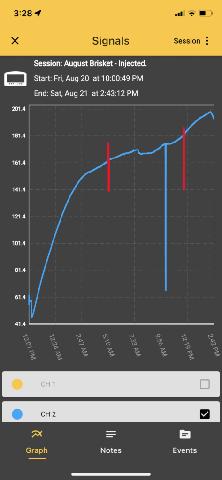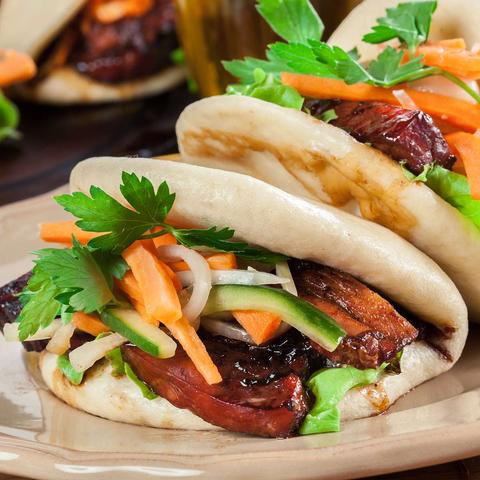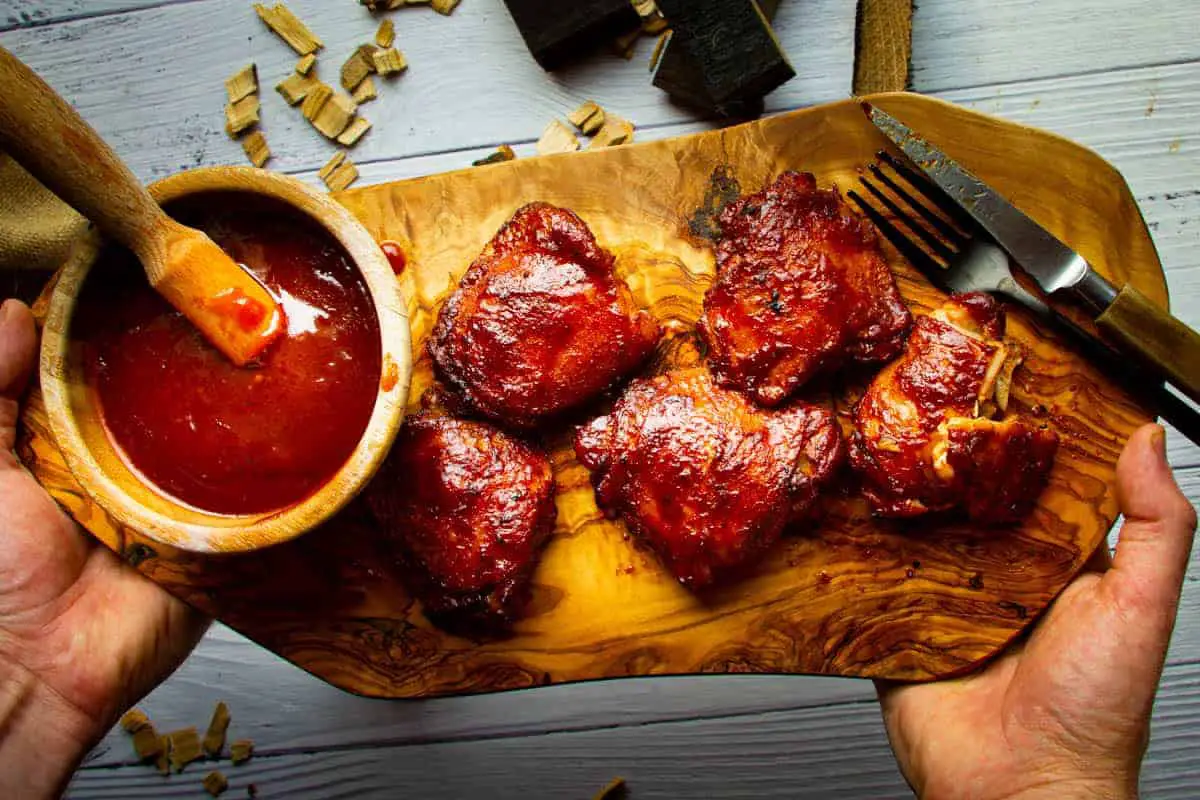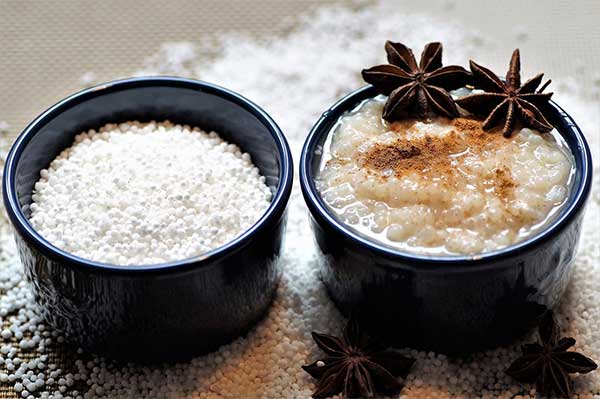
“Discover a Gluten-Free Alternative: Unleash the Potential of Tapioca Flour in Your Recipes! Elevate your culinary creations with this exceptional substitute, perfect for thickening sauces, baking delectable treats, and creating crispy coatings. With its smooth texture and neutral taste, tapioca flour offers a versatile solution to cater to various dietary needs. Enhance your dishes without compromising on quality or flavor. Try it today!”
7 Substitutes for Tapioca Flour to Use in Your Cooking
If you find yourself without tapioca flour, there are several viable substitutes that you can use in your cooking. One of the best substitutes is cornstarch, which is easily accessible and gluten-free. Cornstarch thickens in a similar way to tapioca flour and can be used in sauces, soups, stews, and puddings. It holds up well to heat and gives a glossy finish to your dishes.
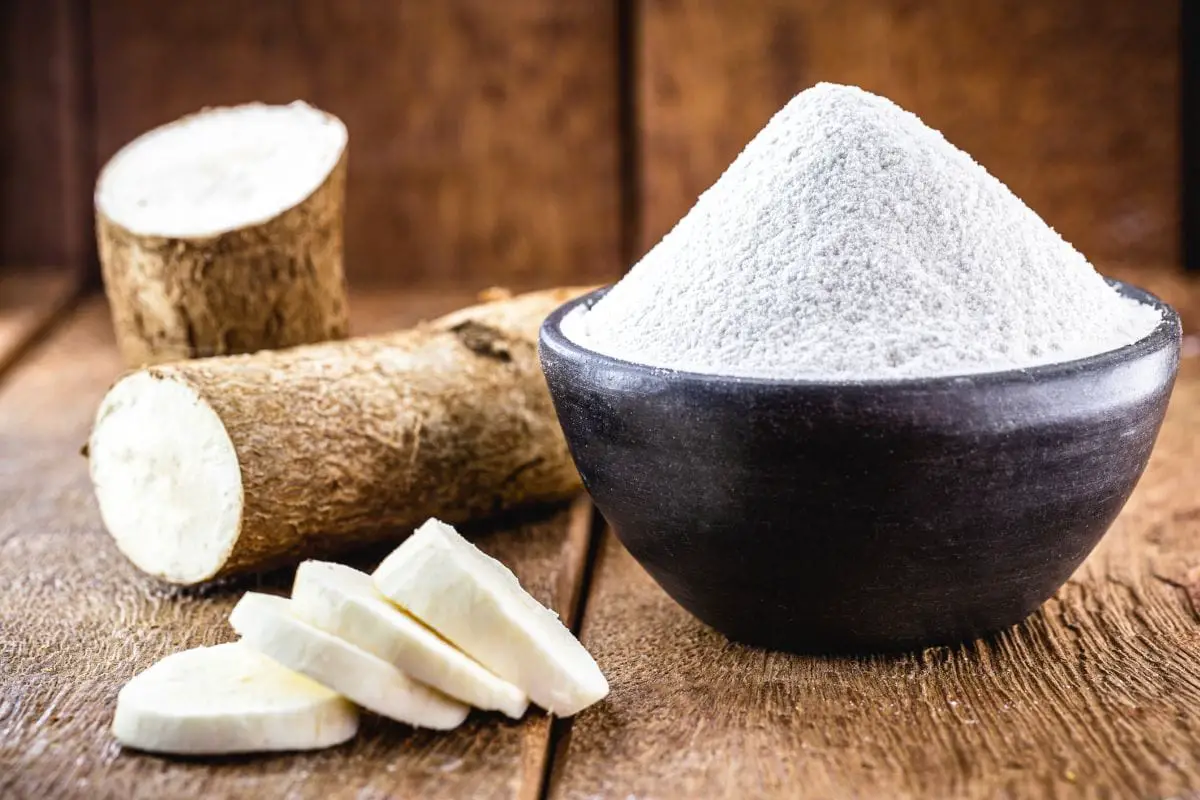
Another alternative is cassava flour, which is also gluten-free. Cassava flour contains the whole tapioca root and adds bulk as well as thickening power. It closely resembles wheat flour and should be used in smaller amounts than tapioca flour.
Potato starch is another good substitute for tapioca flour. It has a similar effect on foods but may result in a denser final product. Sauces thickened with potato starch will have a silky and glossy finish.
If you don’t have any gluten restrictions, all-purpose wheat flour can be used as a substitute for tapioca flour. However, keep in mind that wheat flour contains gluten and will result in a more dense texture when baking. It also doesn’t thicken as quickly as tapioca flour.
Arrowroot is a gluten-free starch that can be used as a 1:1 exchange for tapioca flour when it comes to thickening sauces and soups. However, it tends to be more dense when baking, so it’s best to combine it with another flour like wheat or cassava.
Rice flour is another great substitute for tapioca flour, especially if you’re looking for something sticky with strong thickening capacity. However, use about half the amount of rice flour compared to tapioca flour because it absorbs moisture quickly.
Xanthan gum is a plant-based thickener that can be used in the same way as tapioca flour. It has a similar chewy and binding texture but requires less quantity to thicken.
What is Tapioca Flour?
Tapioca flour, also known as tapioca starch, is a gluten-free flour made from the starchy part of the cassava plant. The cassava root is harvested and processed to extract the starch, which is then dried and ground into a fine powder. Tapioca flour is commonly used in baking as a substitute for wheat flour, particularly in gluten-free recipes. It has a neutral flavor and adds chewiness to baked goods.
In addition to baking, tapioca flour is also used as a thickener in sauces, soups, stews, and puddings. It can be added to hot liquids to create a smooth and glossy texture. Tapioca flour reacts differently to heat compared to other thickeners like cornstarch or potato starch. It may lose its thickening power if heated for too long.
Best Substitutes For Tapioca Flour
Cornstarch is the best substitute for tapioca flour when it comes to thickening sauces, soups, stews, and puddings. It is readily available in most pantries and is also gluten-free, making it an ideal alternative for those with dietary restrictions. Cornstarch thickens in a similar way to tapioca flour but may not give the same glossy finish to the food. It can withstand heat better than tapioca flour and can be added earlier in the cooking process without losing its thickening power.
Cassava flour is another gluten-free option that can be used as a substitute for tapioca flour. It is made from the whole tapioca root, unlike tapioca flour which only contains the starchy portion of the plant. Cassava flour has a higher fiber content and more closely resembles wheat flour in texture. When using cassava flour as a thickener, smaller amounts should be used compared to tapioca flour.

Potato starch can also be used as a substitute for tapioca flour in most cases. The process of extracting starch from potatoes is similar to that of tapioca root, resulting in a similar light and fluffy starch. Sauces and stews thickened with potato starch will have a silky and glossy finish like those thickened with tapioca flour. However, using potato starch may result in a denser final product depending on what you are cooking.
All-purpose wheat flour can be used as a substitute for tapioca flour in a pinch, but there are some differences to consider. Wheat flour contains gluten, so it is not suitable for those who need to follow a gluten-free diet. Additionally, wheat flour has a denser texture and does not provide the same chewiness as tapioca flour when used in baking. Gravies, soups, and sauces thickened with wheat flour will have a matte finish and a different flavor compared to those thickened with tapioca flour.
Arrowroot is another gluten-free starch that can be used as a substitute for tapioca flour. It has a similar texture and color to tapioca starch and can be used as a 1:1 replacement in thickening sauces and soups. However, when baking with arrowroot, it is recommended to use another flour such as wheat flour or cassava flour to balance out the texture.
Rice flour is also a great substitute for tapioca flour, especially for gluten-free cooking. It has a stronger thickening capacity than tapioca flour and is less sweet. When using rice flour as a thickener, about half the amount should be used compared to tapioca flour due to its strong absorbing quality. When baking, rice flour should be combined with another flour to maintain the desired texture.
Xanthan gum can also be used as a substitute for tapioca flour in certain cases. While not identical to tapioca flour, xanthan gum can be used in the same way as a plant-based thickener and binder. Only a small fraction of xanthan gum is needed compared to tapioca flour to achieve the desired thickness without turning the food into glue.
#1 Cornstarch
Cornstarch is the best substitute for tapioca flour for both thickening and frying. It is an ideal ingredient for gluten-free baking and cooking, as it is made from finely ground corn and is gluten-free. Cornstarch thickens in a similar way to tapioca flour, although it may give a less glossy finish to the food. It can also withstand heat better than tapioca flour, so it can be added earlier in the cooking process without losing its thickening power. Cornstarch can be used interchangeably with tapioca flour in most recipes, but it should not be used in highly acidic or sugary dishes.
As a gluten-free alternative to tapioca flour, cassava flour can be used. Cassava flour contains the whole tapioca root, providing more fiber content compared to tapioca flour. It closely resembles wheat flour in texture and adds bulk as well as thickening power. When using cassava flour as a substitute for tapioca flour, smaller amounts should be used as a thickener.
Potato starch is another substitute for tapioca flour that can be used for both thickening and frying. The process of extracting starch from potatoes is similar to extracting it from the tapioca root, resulting in a light and fluffy starch that is comparable between the two. Potato starch can be swapped with tapioca flour in a 1:1 ratio when thickening sauces or stews, producing silky and glossy results.
#2 Cassava Flour
Cassava flour is a great substitute for tapioca flour, especially if you’re looking for a gluten-free option. Made from the cassava plant, cassava flour contains the entire tapioca root, while tapioca flour only contains the starchy part of the plant. This means that cassava flour has more fiber content and closely resembles wheat flour in texture. When using cassava flour as a substitute for tapioca flour, keep in mind that it will add bulk as well as thickening power. You’ll want to use it in smaller amounts than tapioca flour when thickening sauces, soups, or stews. Additionally, cassava flour is high in carbohydrates, so if you’re looking for a lower carb option, you may want to consider other substitutes.
#3 Potato Starch
#3 Potato Starch
Potato starch is a great substitute for tapioca flour in various dishes. It has a similar effect on foods and can be used as a thickener in sauces, soups, and stews. When using potato starch as a substitute, you can simply swap it with tapioca flour in a 1:1 ratio. However, keep in mind that potato starch may result in a denser final product, depending on what you are cooking.
The process of extracting the starch from potatoes is very similar to extracting it from tapioca root. The light, fluffy starch that is extracted from potatoes is very similar to tapioca starch. Sauces thickened with potato starch will have a silky and glossy finish, just like when using tapioca flour.
Overall, potato starch is an effective substitute for tapioca flour when it comes to thickening sauces and achieving a similar texture.
#4 All-Purpose Flour
All-purpose flour can be used as a substitute for tapioca flour in baking, although there are some differences to consider. When using all-purpose flour as a substitute, keep in mind that it contains gluten, so it is not suitable for those who need a gluten-free option. Additionally, the texture of baked goods made with all-purpose flour will be more dense and less chewy compared to those made with tapioca flour. The thickening power of all-purpose flour is also slower compared to tapioca flour, so it may take longer to achieve the desired consistency when using it as a thickener for sauces or soups. Furthermore, all-purpose flour does not provide the same glossy finish as tapioca flour when used as a thickener.
#5 Arrowroot
#5 Arrowroot
Arrowroot is a gluten-free starch that can be used as a substitute for tapioca flour. It has a similar texture and color to tapioca starch, making it an excellent thickening agent for sauces and soups. When using arrowroot as a thickener, you can exchange it in a 1:1 ratio for tapioca flour. However, when baking with arrowroot, you’ll need to add another flour like wheat flour or cassava flour to balance out the texture, as it tends to be more dense. Overall, arrowroot is a great alternative to tapioca flour for both thickening and baking purposes.
#6 Rice Flour
Rice flour is another great substitute for tapioca flour, and this is one that most gluten-free cooks have on hand. It’s also a good substitute for wheat flour in gluten free cooking. Rice flour can be stickier and has a stronger thickening capacity than tapioca flour. It’s also less sweet than tapioca flour.
When using rice flour as a thickener, use about half the amount you would tapioca flour. It has a strong absorbing quality, which will dry out your dish faster. When you’re baking, you need to use a second flour to make up the difference between the ratios, as you should only use half the amount of rice flour as tapioca flour, but the bulk still needs to be covered by another flour.
#7 Xanthan Gum
Xanthan gum is a plant-based thickener that can be used as a substitute for tapioca flour in certain cases. It has similar properties to tapioca flour and can be used as a stabilizing or binding agent in cooking and baking. Like tapioca flour, xanthan gum is gluten-free and provides a chewy, binding texture. It can be used to thicken soups and sauces, giving them a glossy appearance. However, it’s important to note that xanthan gum is much more potent than tapioca flour, so only a small amount should be used to avoid over-thickening.
Frequently Asked Questions
1. What is the best substitute for tapioca flour to use as a thickener?
If you don’t have tapioca flour on hand, cornstarch is the best substitute for thickening sauces, soups, stews, and puddings. Cornstarch is gluten-free and thickens in a similar way to tapioca flour.
2. What is the best substitute for tapioca flour to use for frying?
Cornstarch, potato starch, and rice flour are all good substitutes for tapioca flour when frying foods. These alternatives can be used to coat meats before frying.
3. What is the best substitute for tapioca flour to use for baking?
Rice flour, chestnut flour, and all-purpose wheat flour are good substitutes for tapioca flour in baking. However, it’s important to note that wheat flour contains gluten, so if you need a gluten-free option, choose one of the other substitutes.
4. Can cassava flour be used as a substitute for tapioca flour?
Yes, cassava flour can be used as a substitute for tapioca flour. However, cassava flour contains more fiber content and resembles wheat flour more closely in texture. Use it in smaller amounts than tapioca flour when thickening.
5. Is xanthan gum a suitable substitute for tapioca flour?
Xanthan gum can be used as a substitute for tapioca flour in certain cases. It has a similar chewy texture and can thicken soups and sauces with a glossy appearance. However, only a small amount of xanthan gum is needed compared to tapioca flour.
What is the best substitute for tapioca flour to use as a thickener?
The best substitute for tapioca flour to use as a thickener is cornstarch. Cornstarch is readily available and is an ideal ingredient for gluten-free baking and cooking. It thickens in a similar way to tapioca flour, although it may not provide the same glossy finish to the food. Cornstarch also holds up better to heat, so it can be added earlier in the cooking process without losing its thickening power.
Another alternative to tapioca flour for thickening is potato starch. It has a similar effect on foods but may result in a denser final product. Potato starch can be swapped with tapioca flour in a 1:1 ratio when thickening sauces or stews.
Arrowroot is another good substitute for tapioca flour as a thickener. It has a similar texture and color and can be used in a 1:1 exchange with tapioca flour when thickening sauces and soups.
Xanthan gum is also an excellent substitute for tapioca flour in certain cases. It works as a plant-based thickener and binder, providing a chewy texture similar to tapioca flour. However, it requires much less xanthan gum compared to tapioca flour to achieve the desired thickness, so it should be used sparingly.
Overall, cornstarch, potato starch, arrowroot, and xanthan gum are all great alternatives to tapioca flour as thickeners. The choice depends on personal preference and the specific recipe being prepared.
What is the best substitute for tapioca flour to use for frying?
When it comes to frying, the best substitute for tapioca flour is cornstarch. Cornstarch is an ideal ingredient for gluten-free frying because it crisps up nicely and provides a light and crispy texture. It can be used in the same way as tapioca flour, coating meats or vegetables before frying. Cornstarch is readily available in most pantries and is a great alternative if you don’t have tapioca flour on hand.
Another good substitute for frying is potato starch. Like cornstarch, potato starch creates a crispy coating when fried and works well as a thickener. It has a similar effect on foods as tapioca flour, although it may result in a denser final product depending on what you are frying.
Rice flour is another option for frying and can provide a light and crispy texture to fried foods. However, rice flour may absorb more oil than other substitutes, so it’s important to use it in moderation to avoid greasy results.
Overall, cornstarch, potato starch, and rice flour are all excellent alternatives to tapioca flour for frying. They provide similar results in terms of texture and crispiness while being suitable for gluten-free cooking.
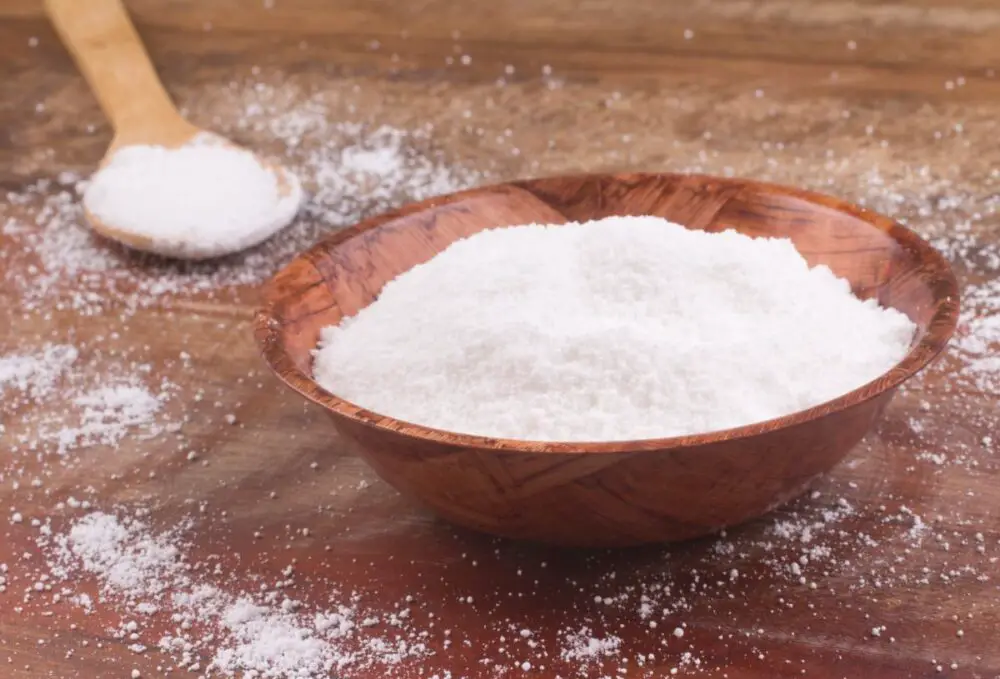
What is the best substitute for tapioca flour to use for baking?
If you’re looking for a substitute for tapioca flour in baking, there are several options to consider. Rice flour is one of the best substitutes, as it has a similar sticky and thickening capacity as tapioca flour. However, you’ll need to use about half the amount of rice flour compared to tapioca flour, as it has a strong absorbing quality that can dry out your dish faster.
Another option is chestnut flour, which can be used as a 1:1 substitute for tapioca flour in baking. It adds a nutty flavor and works well in gluten-free recipes. All-purpose flour is also an alternative, but keep in mind that it contains gluten, so it’s not suitable for those following a gluten-free diet. When using all-purpose flour as a substitute, you’ll need to replace it in a 1:1 ratio with tapioca flour, but be aware that the texture may be more dense and less chewy compared to using tapioca flour.
Overall, when substituting tapioca flour in baking, consider using rice flour or chestnut flour for gluten-free options or all-purpose flour if gluten is not a concern. Adjustments may need to be made to the original recipe to accommodate these substitutions.
Conclusion
In conclusion, there are several good substitutes for tapioca flour that can be used as thickeners. Cornstarch is the best substitute, as it is readily available and gluten-free. It thickens in a similar way to tapioca flour but may not give the same glossy finish. Another alternative is cassava flour, which is also gluten-free but higher in carbohydrates. Potato starch can also be used as a substitute, although it may result in a denser final product.
For frying, cornstarch, potato starch, and rice flour are recommended substitutes for tapioca flour. These alternatives work well for coating meats and other foods before frying.
When it comes to baking, rice flour, chestnut flour, and all-purpose flour are good substitutes for tapioca flour. Rice flour has a stronger thickening capacity and can be stickier than tapioca flour. Chestnut flour adds a nutty flavor to baked goods, while all-purpose flour can be used in a 1:1 ratio with tapioca flour but may result in a denser texture.
Overall, while tapioca flour is a popular choice for gluten-free cooking and baking, there are many viable substitutes available that won’t compromise your recipes.
In conclusion, there are several viable substitutes for tapioca flour that can be used in various recipes. Arrowroot flour, potato starch, and cornstarch can all serve as effective alternatives, providing similar textures and results. However, it is important to consider the specific recipe requirements and desired outcome when selecting a substitute. Experimentation may be necessary to achieve the desired taste and texture when replacing tapioca flour in cooking or baking.
Learn More About Grilling
If you want to learn more about grilling, check out these other helpful resources!

